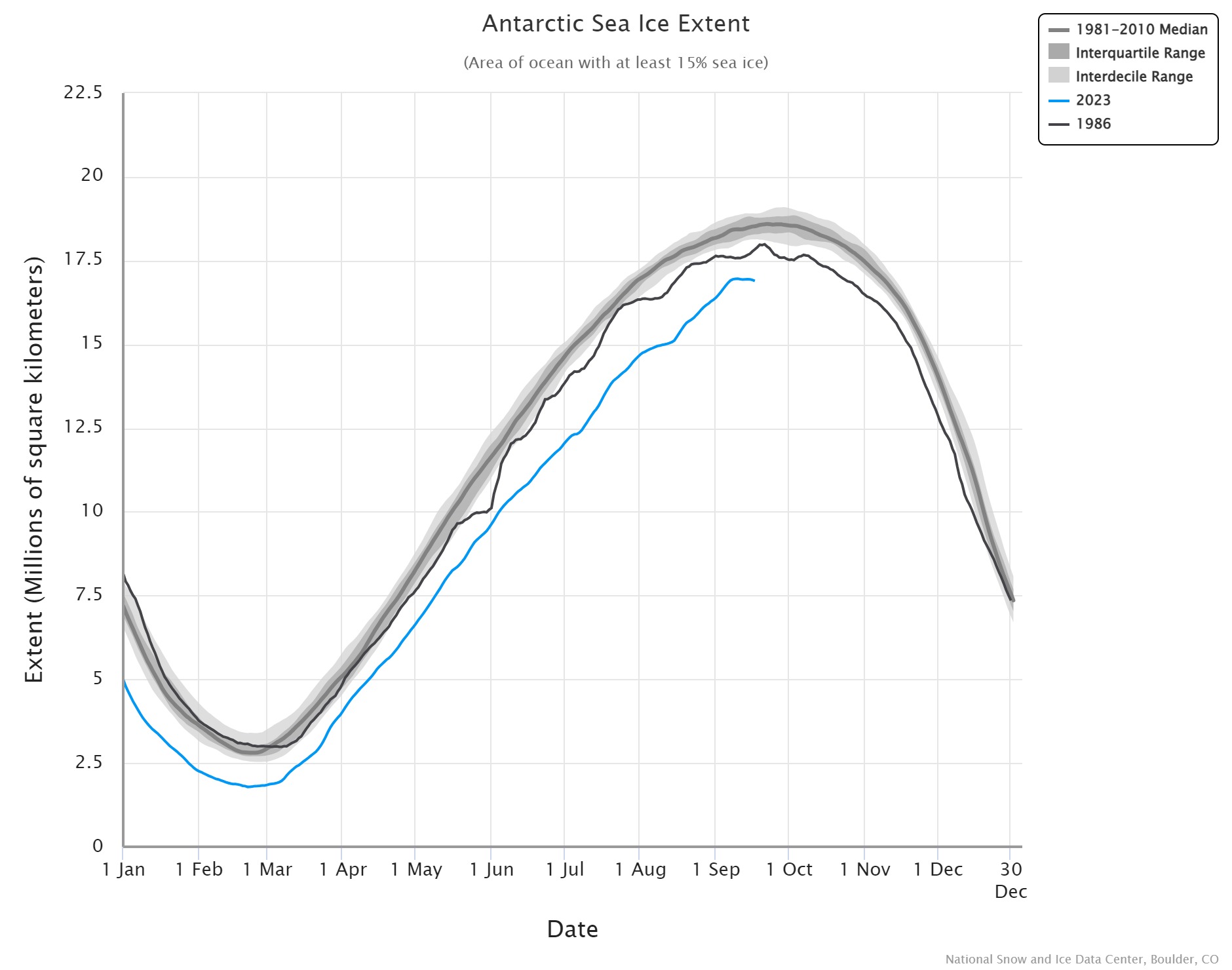It’s mid-September, which means the amount of sea ice surrounding Antarctica should be reaching a healthy level as it hits its annual maximum extent. However, according to satellite readings from the National Snow and Ice Data Center (NSIDC), the quantity of ice is currently way below anything that has ever been seen before at this time of year, with worrying implications for the planet as a whole.
Antarctic sea ice typically undergoes massive fluctuations over the course of a 12-month period, with a big freeze occurring during the Southern Hemisphere winter while an enormous thawing takes place during the summer. On average, the extent of the ice peaks at around 18.5 million square kilometers (7 million square miles) in the second half of September, before dropping to about 2.5 million square kilometers (1 million square miles) in late February.
Worryingly, however, sea ice levels fell to a record low of 1.79 million square kilometers (691,000 square miles) in February of this year and have remained well below average ever since. According to the NSIDC, the growth of ice accelerated dramatically during the first eight days of September, but has since slowed, leaving the Antarctic unusually bare for this time of year.
“If no further net growth occurs, the sea ice maximum will be below 17 million square kilometers (6.56 million square miles) for the first time in the satellite record, and about one million square kilometers (386,000 square miles) below the previous record low maximum of 1986,” explains the NSIDC. That year, Antarctic sea ice reached an annual maximum of just 17.986 million square kilometers (6.94 million square miles) on September 21.
As of September 17, 2023, satellite data shows that just 16.892 million square kilometers (6.52 million square miles) of sea ice are present around Antarctica. For reference, 17.834 million square kilometers (6.89 million square miles) were detected on the same date in 1986, while 18.236 square kilometers (7.04 million square miles) of ice existed on this day last year.

Antarctic sea ice levels for 2023 (blue) are far lower than 1986 (black), when the record low annual maximum was recorded.
Image credit: National Snow and Ice Data Center
Until recently, Antarctic sea ice was believed to be largely unaffected by climate change, with levels remaining more or less constant between 1979 and 2010. This stability has been credited with keeping global temperature levels in check, as the huge expanse of ice around the South Pole reflects sunlight back into space and cools the ocean beneath and around it.
However, as sea ice disappears, more of the Sun’s energy is absorbed by newly exposed water, resulting in a rise in ocean temperatures. This, in turn, accelerates the melting of sea ice at both of the planet’s poles, thus reducing the capacity of these frozen regions to cool the planet.
According to recent analyses, this year’s catastrophic figures should only be seen once every 13 billion years, assuming the planet’s overall temperature is stable. The fact that Antarctica is so out of whack therefore provides a terrifying indication of just how crazy this year has been on Planet Earth.
Source Link: Antarctic Sea Ice Is At A Staggeringly Low Record Level